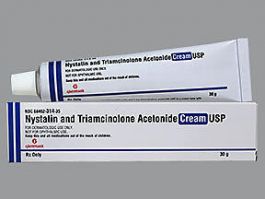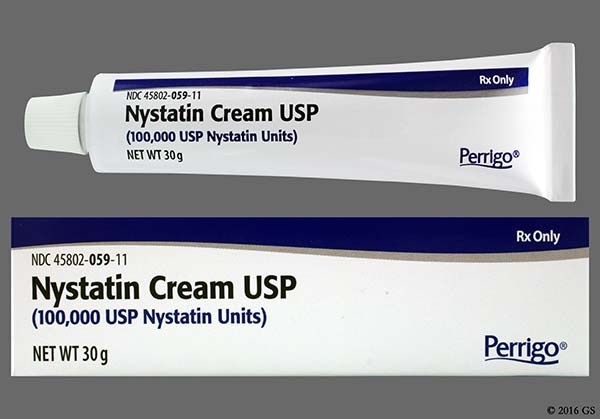

Resistance to nystatin is minimal in Candida albicans, but tends to develop in other species of Candida. It exerts its antifungal effects via disruption of the fungal cell membrane. Nystin is an antifungal that is both fungistatic and fungicidal in vitro against a wide variety of yeasts and yeast-like fungi. It is poorly absorbed from the gastrointestinal tract. As a result of binding, the membrane is no longer able to function as a selective barrier, and potassium and other cellular constituents are lost. Nystin exerts its antifungal activity by binding to sterols in the fungal cell membrane. Medication should never be administered without first consulting your veterinarian.Nystin has fungistatic or fungicidal activity against variety of pathogenic and nonpathogenic yeast and fungi, including Candida albicans. Even if your pet feels better, the entire treatment plan should be completed to prevent relapse or prevent the development of resistance. Be certain to complete the prescription unless specifically directed by your veterinarian. The duration of administration depends on the condition being treated, response to the medication and the development of any adverse effects.
#Nystatin cream uses skin#
For skin infections, the cream can be applied on the skin two to three times a day for seven days or as indicated by your veterinarian. For ear infections, the typical dose of Panalog® ointment ranges from three to five drops in the ear canal twice daily for seven days.

Do not use this drug combination in the eyes! Panalog Dosage for Dogs and Catsįor internal Candida infection, nystatin is dosed at 50,000 to 150,000 units by mouth every 6 to 8 hours. Nystatin should not be used in animals with known hypersensitivity or allergy to the drug. Chronic use can suppress the function of the adrenal glands. The combination of drugs in Panalog® (nystatin, neomycin, thiostrepton, and triamcinolone acetonide) is generally safe for use in dogs and cats. It is possible that the steroid component of Panalog can be absorbed into the circulation. Precautions and Side Effects for Panalog Use in Pets Nystatin is also available as a 100,000 units/ml solution and 500,000 unit oral tablets. Panalog® is available as ointment or cream in various size tubes (7.5 ml and 15 ml). Nystatin kills the fungus by interfering with the cell membrane of the microorganism. Nystatin is an antifungal antibiotic used to treat infection due to the fungus, Candida albicans. The use of Panalog is not recommended in deep infections or abscesses How Does Panalog Work?Ĭertain fungal infections can complicate medical diseases of the ears, mouth, lung and intestine. Nystatin is not effective against infections caused by viruses, bacteria, viruses or parasites (such as worms or mites) unless it is combined with other products. Nystatin has been used for the treatment of skin conditions such as interdigital cysts (infections between the toes) in cats and dogs and in anal gland infections in dogs. The drug is also indicated for the treatment of acute otitis externa (ear inflammation/infection) and it can be used in some chronic ear problems. It should be stressed that some fungi are resistant to the effects of the drug. Panalog is prescribed to treat or control infections caused by susceptible fungi (molds, yeast). Nystatin (Panalog) Uses for Dogs and Cats Panalog is a combination product containing nystatin (antifungal), neomycin (an antibiotic), thiostrepton (antibacterial) and triamcinolone acetonide (steroid, anti-inflammatory drug). Veterinary formulations: Panalog® (Fort Dodge).Human formulations: Mycostatin® (Apothecon), Nilstat® (Lederle) and various generic preparations.This drug is registered for use in humans and animals: Nystatin, also known by the brand name Panalog®, is prescribed to treat or control infections caused by susceptible fungi like molds or yeast.



 0 kommentar(er)
0 kommentar(er)
